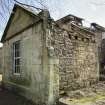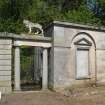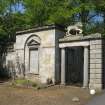Notice
Following a review of the Buildings at Risk Register we have paused the Register while we consider options for its future.
The website will remain accessible and searchable during this time, but it will not be updated and we’re not accepting nominations for additions to the Register. If you need to contact us about the BARR please email hmenquiries@hes.scot
Read the review report here and you can find out more about why we have paused the BARR on our news centre.
The Lions Gate, Preston Hall House Policies, Pathhead
Ordnance Survey licence number AC0000807262. All rights reserved. © Copyright and database right 2025. Public Sector Viewing Terms
Useful Links
- Canmore:
- PRESTON HALL, THE LION'S GATE
- Historic Scotland:
- HS Reference No 746
- Historic Gardens & Landscapes:
- GDL00307
General Details and Location
Category
AT RISK
Name of Building
The Lions Gate
Other Name(s)
Address
Preston Hall House Policies, Pathhead
Locality
Postcode
Planning Authority
Divisional Area
Reference No
5343
Listing Category
A
OS Grid Ref
NT 39252 65209
Location Type
Rural
HS Reference No
746
Description
Pair of single storey, square-plan classical lodges with balustraded screen walls and paired columns supporting recumbent Coade stone lions. Dressed ashlar. Base and eaves course. Originally 12-pane timber sash and case, presently concealed behind timber sheeting. Piended grey slate roof with zinc ridging. Concealed rainwater goods. Stack to left of main building, replacement stack on W lodge, damaged cans; cans missing on E lodge.
Situated at the formal entrance to Prestonhall, the lodges straddle the drive that winds along a wooded slope, at the foot of which flows the Tyne Water. The origin of the lodges' name can be taken from the two lions which surmount the pillars, or from the circumstance that Sir Walter Scott, at this spot, introduces Sir David Lindsay of the Mount, Lord Lion King of Arms, for Scotland, as the guide of "Marmion" and his train to Crichton Castle. It was on this site that the Duchess of Gordon, then owner of the Hall, had breakfast prepared for Prince Charles Stuart in 1745. For this act, she lost the £1000 pension she received from the Exchequer, which she had been granted for raising her family as Protestants.
The ornamental lions are made from Coade stone - one of the earliest mass-produced artificial stones, named after its manufacturer Mrs Eleanor Coade. (Historic Scotland)
Situated at the formal entrance to Prestonhall, the lodges straddle the drive that winds along a wooded slope, at the foot of which flows the Tyne Water. The origin of the lodges' name can be taken from the two lions which surmount the pillars, or from the circumstance that Sir Walter Scott, at this spot, introduces Sir David Lindsay of the Mount, Lord Lion King of Arms, for Scotland, as the guide of "Marmion" and his train to Crichton Castle. It was on this site that the Duchess of Gordon, then owner of the Hall, had breakfast prepared for Prince Charles Stuart in 1745. For this act, she lost the £1000 pension she received from the Exchequer, which she had been granted for raising her family as Protestants.
The ornamental lions are made from Coade stone - one of the earliest mass-produced artificial stones, named after its manufacturer Mrs Eleanor Coade. (Historic Scotland)
Building Dates
circa 1795
Architects
Robert Mitchel
Category of Risk and Development History
Condition
Very Poor
Category of Risk
High
Exemptions to State of Risk
Field Visits
23/5/2012, 23/03/2022
Development History
23 May 2012: External inspection finds the general appearance of the gates is good, however, closer inspection finds evidence of subsidence and water penetration, particularly at the western lodge building and its single storey outshoot. From what could be seen from the exterior, interiors of the lodges have been seriously damaged as a result.
22 August 2018: A member of the public notes a section of wall to the west of the gates has collapsed. As previously noted, parts of the two lions are missing and cracks to the extant fabric are evident.
23 March 2022: External inspection finds that the condition of the western lodge has greatly deteriorated. The west elevation has collapsed, as well as the roof of the section to the rear. This has resulted in the loss of the chimney on the western lodge. There are several structural cracks and movement of the skews on the north elevation. A section of the adjacent wall has collapsed to west of lodge.
The eastern lodge is in less severe condition. There are signs of damp and accelerated stone decay and mortar loss on the east elevation. Roof appears intact from ground level but unable to view total structure. Move condition to very poor and risk to high.
The eastern lodge is in less severe condition. There are signs of damp and accelerated stone decay and mortar loss on the east elevation. Roof appears intact from ground level but unable to view total structure. Move condition to very poor and risk to high.
Guides to Development
Conservation Area
Pathhead and Ford
Planning Authority Contact
PAC Telephone Number
0131 271 3302
Availability
Current Availability
Not Available
Appointed Agents
Price
Occupancy
Vacant
Occupancy Type
N/A
Present/Former Uses
Name of Owners
Type of Ownership
Unknown
Information Services
Additional Contacts/Information Source
Bibliography
Online Resources
Classification
Cottages and Lodges
Original Entry Date
17-JUL-12
Date of Last Edit
29/03/2022










